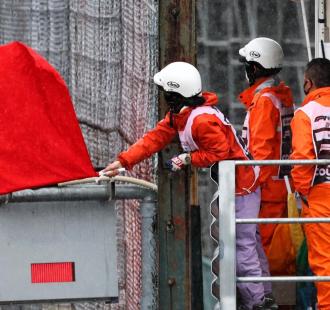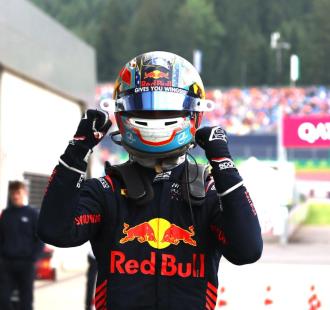
F1 red flags: Rising trend of race stoppages continues in 2023
This year's Formula 1 campaign saw six red flags deployedthroughout the season - the second-most in the sport's history. Thesporting regulations outline that Race Control may opt to interveneand halt the race if “the circuit is blocked by an accident orbecause weather or other conditions make it dangerous to continue”.Red flags have been used a lot more liberally in the last fouryears compared to previous seasons, with 20 race stoppagesoccurring since 2020. The 2021 campaign that saw Max Verstappen andLewis Hamilton go head-to-head for the World Championship featuredseven red flags - a record for F1. There was a dip last year withjust three red flags but the tally spiralled upward this year andalmost matched the record F1 set itself two years ago. What werethe red flags deployed for in 2023? The first red flag of the yearwas issued on lap eight of the Australian Grand Prix when AlexAlbon crashed while running inside the points. In fact, it was thefirst of three red flags to be deployed that race, the most for asingle Grand Prix in F1 history. A second red flag of the GrandPrix was deployed on lap 55 when Kevin Magnussen crashed just ahandful of laps before the end. At the restart, chaos unfolded atthe first corner when Fernando Alonso was spun around by CarlosSainz, while the two Alpine drivers of Esteban Ocon and PierreGasly collided and sustained terminal damage. The fourth red flagof the year came at the Dutch Grand Prix when torrential rain hitthe circuit toward the end of the race, causing Zhou Guanyu toaquaplane off the track and into the barrier. The final two racestoppages of the year came at back-to-back races. Magnussensuffered a high-speed crash in Mexico City, with the barriersneeding repairing before the event was resumed. At the followinground in Brazil, Albon and Magnussen collided on the run to thefirst corner on the opening lap to cause the final red flag of theyear, with more barrier repairs required while debris was alsocleaned from the track. Red flags have undoubtedly boosted the showas they more often than that result in standing restarts to mirrorthe excitement of the traditional opening lap. It makes for a muchmore engaging spectacle to have the cars line-up on the grid againafter a red flag period than watching them stroll around behind theSafety Car. A key factor aside from the entertainment factor is theimproved safety that it offers - it ensures that thorough work canbe carried out on barrier repairs and eliminates the mends beingconducted on a live track. F1's rise in the use of red flags hasseen them deployed 20 times between 2020 and 2023 - from 1999 to2019, the previous 20 were used. Additionally, there was the samenumber of red flags used during the 2021 campaign during the entire2000s decade. But that's not to say that red flag usage is a modernphenomenon - in the four-season period that spanned 1987 to 1990,15 red flags were issued. However, the dip in the years thatfollowed is not likely to be repeated anytime soon as F1 continuesto improve safety measures as well as the spectacle for the fans.


